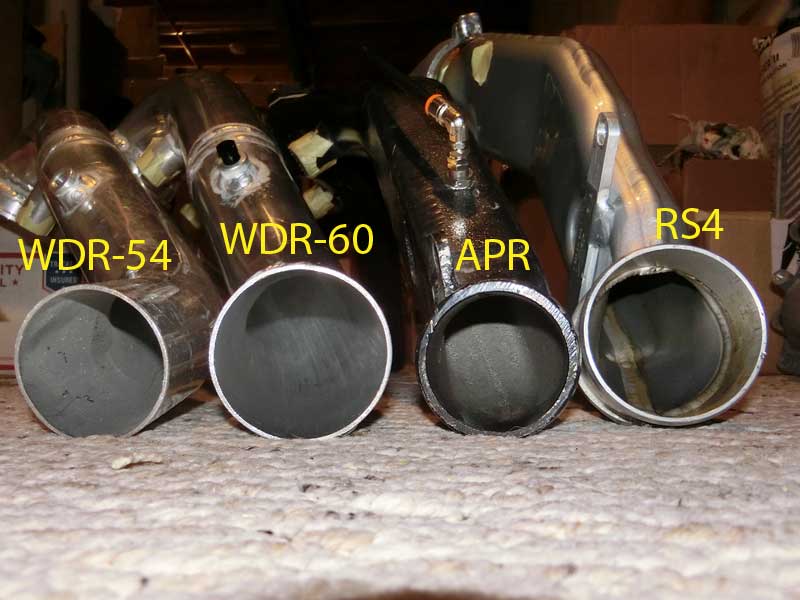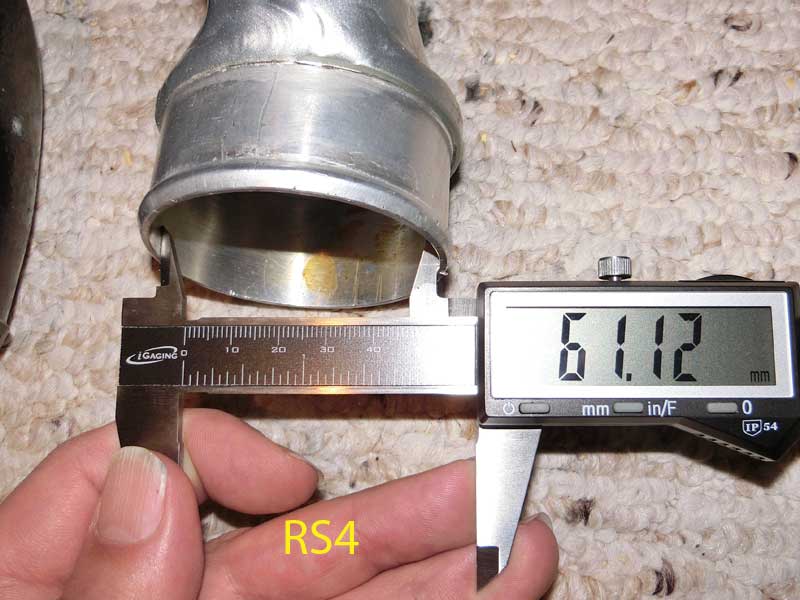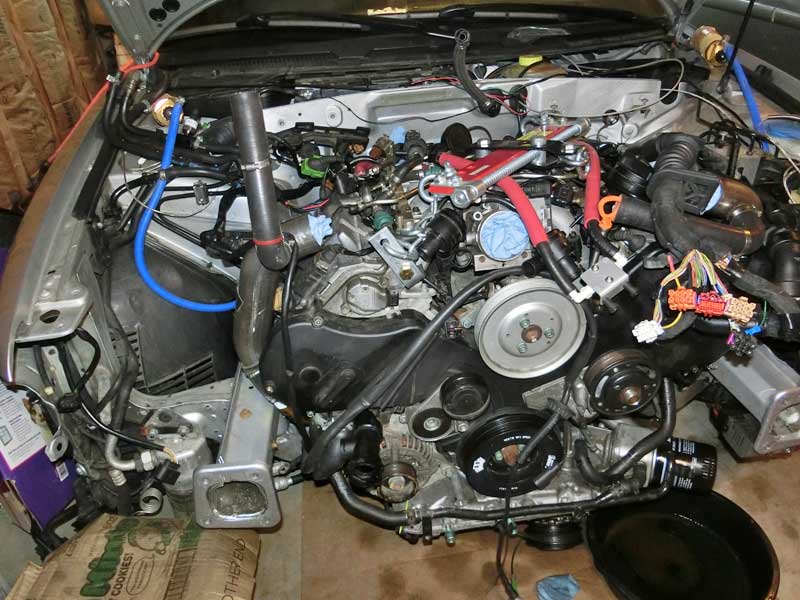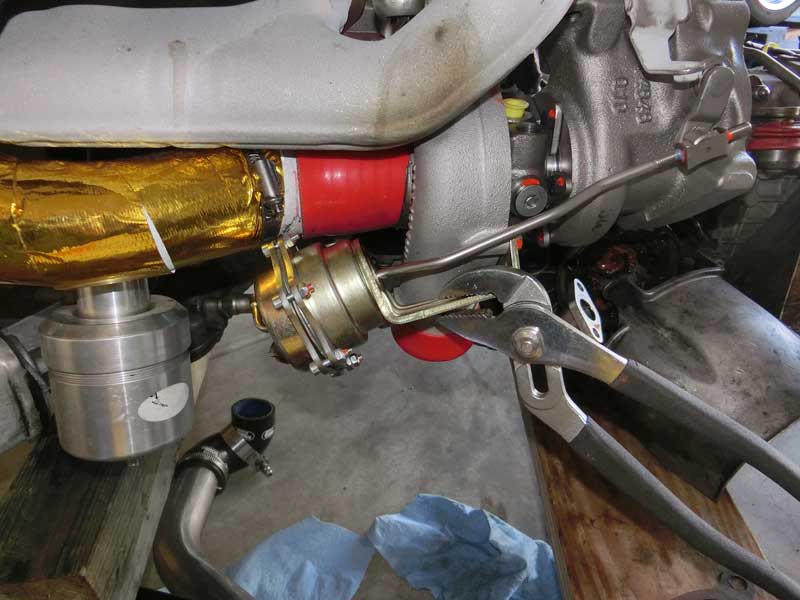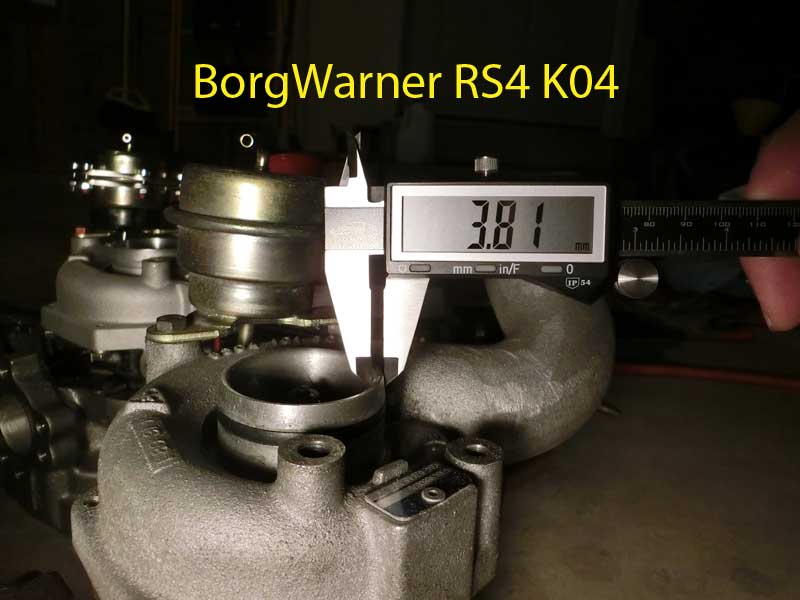A box full of White Dog Racing intake parts for the Audi B5 S4/RS4 has arrived for flow testing on the PTS flowbench. The parts, shown below, consist of a few variations of the intake bi-pipes and a set of turbocharger to intercooler hardpipes.

The intake bi-pipes cover the 54mm and 60mm tube diameters, flowing to a stock throttle body. Within the two 54mm size pipes there are two variants, one with the MAP sensor in the stock location and one with the sensor offset.
The IC inlet pipes are intended for use with the Silly Rabbit Motorsport SMIC’s with the larger RS4 size piping.
Results:
After adding the APR bipipe and RS4 bipipe into the mix I began setting things up for testing.

One thing I noticed right away was how much lighter the White Dog Racing bipipes felt in comparison to the APR bipipe. I set each product on a postal scale to get an idea of the relative weights.
- APR: 5lb 9 oz
- WDR-60: 2lb 9oz
- WDR-54: 2lb 7oz
Those weights are approximate as I needed to balance the products on the scale, and I did not bother to remove the MAP sensor, DV hoses, or WMI nozzles/line from the APR bipipe, but the general trend is clear, the APR bipipe weighs about twice what the White Dog Racing products weigh.
I also made a comparison of the inlet diameters:
In sequence from smallest diameter to largest:
Then it was on to the flow bench:

A comparison of the results is shown below:
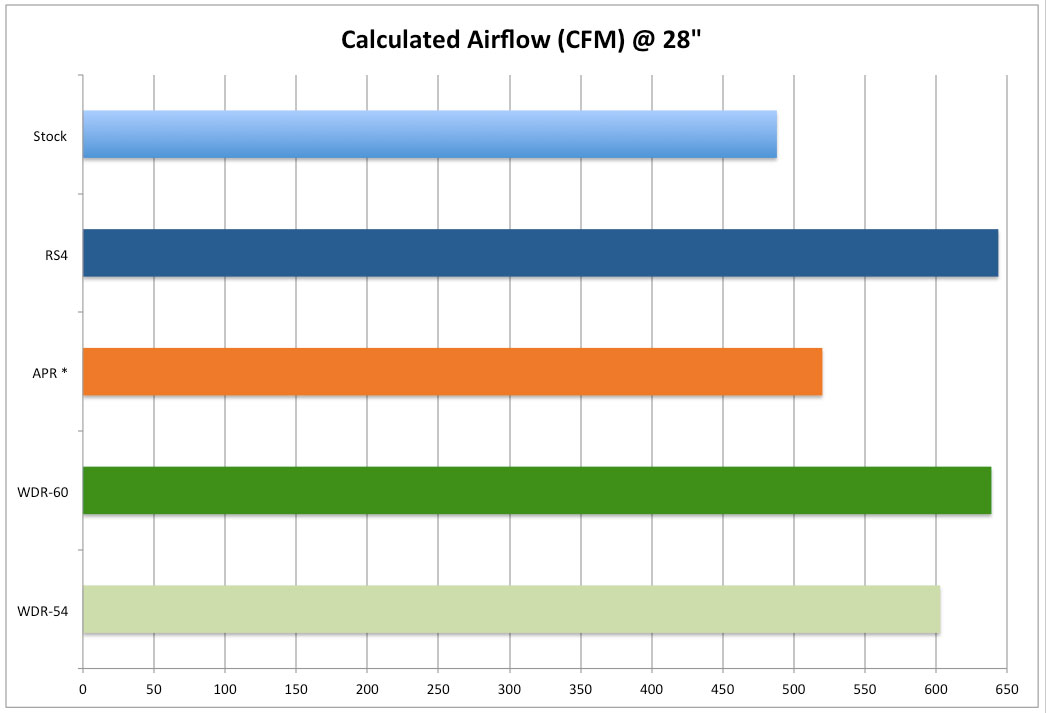
Some comments on these results.
- The White Dog Racing bipipes performed surprising well given the use of the stock S4 throttle body. The larger RS4 components only flowed slightly more than the WDR products.
- I am especially impressed by the 54mm WDR product. Enlarged aftermarket parts often pose a challenge to fit into the S4 engine compartment. It’s likely that minimal accommodations would need to be made with this pipe yet the airflow increase over stock components is substantial.
- The similar results measured from the RS4 components and 60mm WDR bipipe has led me to further consider the benefit of the RS4 throttle body. These results appear to show that the stock TB is not much of a limitation on airflow with these size bipipes. If that is the case then the effort to have an RS4 size throttle body attached to S4 intake manifold, like the SRM product that I have on hand, may not be worth it.
- The difference in airflow between the two WDR-54 size bipipes was minimal so I averaged the two measurements to present a single value.
- The stock bipipes were not measured at the same time as the other bipipes. Due to potential differences in test conditions, ie equipment setup, bench calibration, atmospherics, it is possible and likely that the stock bipipes would have performed differently had they been available. Comparing the RS4 and APR bipipes to the results recorded a few years ago when the stock pipes were tested showed those two products with a calculated airflow 7-10 CFM greater than what was recorded/measured today. Thus it is likely that the stock bipipe datapoint slightly overstates the airflow under today’s test conditions, I estimate by 5 CFM, but it should be close enough for a general comparison.
- The relatively lower airflow through the APR bipipe meant that I was able to measure it at 28″ of H2O, whereas the other products were measured at slightly lower depressions. The reason for this is that the internal plate on the flow bench is spec’d to approximately 600 CFM and the other bipipes tested were able to reach that limit. In order to standardize the results all measurements were adjusted to a 28″ H2O depression. This adjustment was minor – the RS4 bipipe was flowed up to 24″ and the WDR bipipes flowed to 26″.
Below is the percentage increase in airflow that is gained from using the alternative bipipes.
In terms of airflow performance White Dog Racing has debuted an impressive product that gives a solid alternative to the hard to find RS4 components and a substantial improvement over stock parts.


